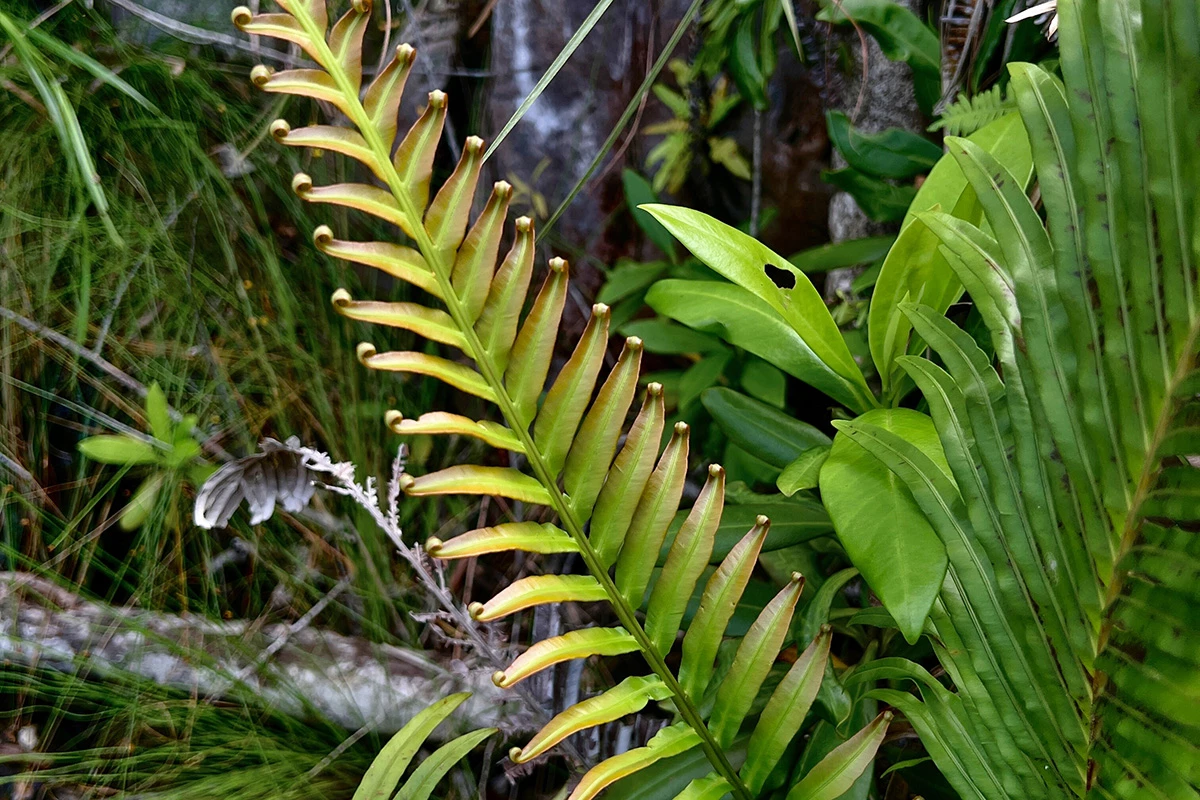A bunch of materials called rare earth elements (REE) that are crucial for producing a vast range of tech products – from electric cars to smartphones to wind turbines – typically require destructive mining and processing practices to get them out of the ground. A team of scientists in China might have just found another source for them that's easier to reach: ferns.
The researchers, led by geochemist Liuqing He of the Chinese Academy of Sciences, discovered for the first time that the fern species Blechnum orientale, naturally crystallizes REE minerals within its tissues above ground in ordinary conditions. That's starkly different from how REEs are typically found on Earth, concentrating in small quantities as compounds in certain types of igneous rocks as magma cools.
This finding, documented in the team's study that appeared in the journal Environmental Science & Technology earlier this month, could drastically reduce our need for mining to extract REEs. And since they're mixed in with other elements, they need to be chemically separated through different processes, this causes destruction to topsoil and vegetation in REE-rich regions, as well as water and air pollution.
REEs aren't actually all that rare – they're scattered around the world, but just not found in voluminous veins like gold. That said, China overwhelmingly dominates the REE supply chain today – the country controls roughly 70% of global rare earth mining and an even larger share of processing capacity, and therefore controls access to these resources.

So how is this happening? Blechnum orientale is what's called a hyperaccumulator plant, which means it's capable of growing in soil with extremely high levels of heavy metals – which would normally be toxic to other species – and absorbs these elements through its roots.
We've known about such plants for a while, but He told Newsweek that what's notable here is, "this fern can facilitate REE mineralization (that is, produce minerals – geologically very important REE minerals – specifically the mineral monazite, that previously was only known to occur in rocks that had been subjected to high temperatures and pressures deep within the Earth). Now, here is monazite growing under Earth surface conditions (the same temperatures and pressures under which humans live). The mineral growing in the plant is nano-size (that is, extremely small monazite particles which also happen to be an industrially significant rare-earth mineral)."

The monazite He referred to is a prominent source of REEs. The discovery, which involved powerful microscopic imaging and chemical analysis techniques of the fern growing in South China, points to the possibility of leveraging a process called phytomining – using hyperaccumulator plants to extract metals from soil – for harvesting otherwise hard-to-obtain REEs.
This could prove to be a major breakthrough to help address the ongoing struggle among countries worldwide to secure REE supplies. In electric cars specifically, neodymium, dysprosium, and praseodymium are primarily used in the powerful permanent magnets inside the motors that drive EVs. REEs also show up in several places in your phone: from the display to the magnets that power the speaker and vibration motor, to the camera lenses, to the circuitry.
So this fern isn't yet producing REEs in vast quantities, but the study reveals that we still know very little about the possibilities of phytomining these valuable elements. The researchers will need to figure out whether B. orientale is the only species capable of self-organizing REEs from various elements, or if others do it too. They also hope to develop a method to extract the monazite and breaking it down into its component REEs without losing too much of the resource in the process.
"This discovery reveals an alternative pathway for monazite mineralization under remarkably mild conditions and highlights the unique role of plants in initiating such processes," noted the researchers.
Source: Nature




